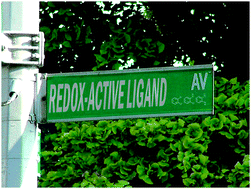New avenues for ligand-mediated processes – expanding metal reactivity by the use of redox-active catechol, o-aminophenol and o-phenylenediamine ligands
Abstract
Redox-active ligands have evolved from being considered spectroscopic curiosities – creating ambiguity about formal oxidation states in metal complexes – to versatile and useful tools to expand on the reactivity of (transition) metals or to even go beyond what is generally perceived possible. This review focusses on metal complexes containing either catechol, o-aminophenol or o-phenylenediamine type ligands. These ligands have opened up a new area of chemistry for metals across the periodic table. The portfolio of ligand-based reactivity invoked by these redox-active entities will be discussed. This ranges from facilitating oxidative additions upon d0 metals or cross coupling reactions with cobalt(III) without metal oxidation state changes – by functioning as an electron reservoir – to intramolecular ligand-to-substrate single-electron transfer to create a reactive substrate-centered radical on a Pd(II) platform. Although the current state-of-art research primarily consists of stoichiometric and exploratory reactions, several notable reports of catalysis facilitated by the redox-activity of the ligand will also be discussed. In conclusion, redox-active ligands containing catechol, o-aminophenol or o-phenylenediamine moieties show great potential to be exploited as reversible electron reservoirs, donating or accepting electrons to activate substrates and metal centers and to enable new reactivity with both early and late transition as well as main group metals.


 Please wait while we load your content...
Please wait while we load your content...